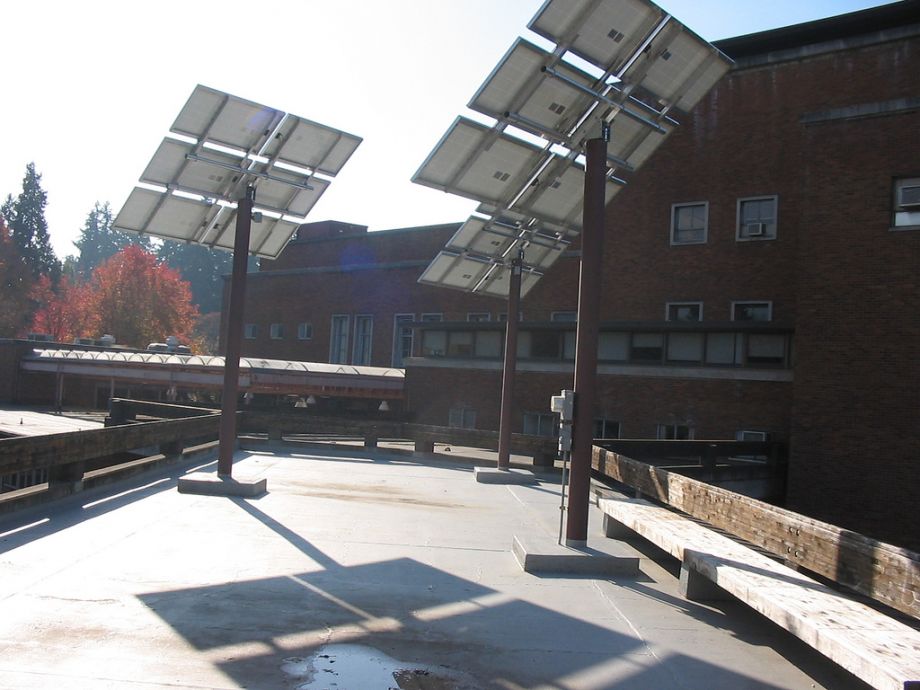Here’s a hypothetical. You live in a nice, airy, fourth-floor walkup. Together with your hip, eco-conscious neighbors, you dream about installing solar panels on the roof and making other green improvements to the building. That way you’ll save money on your energy bills and feel good about yourself to boot, while still enjoying your building’s wainscoting and prewar detail. There’s only one problem: where are you going to get the money to buy those solar panels – which can cost anywhere from $20,000 to $80,000 for a single home?
Enter PACE bonds, which stands for Property Assessed Clean Energy. Jack D. Hidary, of his eponymous foundation, presented PACE earlier this month at the Sustainable City Finance conference, held at the New York Academy of Sciences and hosted by the Urban Age Institute.
At first blush, the idea is a good one: commercial and residential property owners borrow money from banks to retrofit their buildings or buy renewable energy systems. The cost of the loan is then tacked on to the owner’s property taxes, who have 20 years to pay it back. That way, if I borrow $1 million to retrofit my building, but then sell my building five years later, I’m not stuck with the debt – the new owner is.
PACE has other fine features as well. Retrofitting creates local jobs – plumbers, electricians, contractors. Because PACE is attached to property taxes, it’s especially safe for lenders. In fact, Hidary likened it to a Treasury bond – the kind of thing your grandmother bought and stowed under her mattress, and which safely accrued a small, steady amount of interest each year. Most important, though, is what PACE represents: a new product, or investment vehicle, from which to profit.
And it’s for this reason that I believe PACE is worthy of attention.
If you haven’t noticed, green is the new black is the new green. In other words, a lot of people are poised to make a lot of money off of the demand for green development and technology. And though Wall Street isn’t high on anybody’s list right now – except if you’re a beneficiary of this season’s bonuses – one thing financiers consistently do well is create new ways to make money. Although some of these innovative products (collateralized debt obligations) are partly to blame for the global recession, there is no way we can avert an even greater disaster – global climate change – without the private sector. As Hidary pointed out, retrofitting our nation’s cities is estimated to cost between $1 and $2 trillion. The $6 billion’s worth of stimulus (public) funds earmarked for retrofitting doesn’t come close to those figures. And retrofitting doesn’t even begin to account for other costs associated with climate change – like pricier energy and water, hurricane damage, or the effects on ports of rising seas.
Still, I don’t believe that PACE is good enough. It fits too squarely with our nation’s focus on individual change, as opposed to corporate accountability. Consider the rhetoric of our many environmental and public-service programs: “do your part,” we are told, to prevent global warming; use renewable energy; to recycle. Doing our parts makes us feel good, and virtuous, and also works well with our national identity; 200 years after Thoreau, we are still obsessed by the cult of the individual. PACE’s message is the same: you, individual property owner, should take the initiative to retrofit your home.
Yes, personal responsibility is important. But individuals can’t compete with the influence of private industry; consider how much more waste and pollution is produced by a single multinational corporation than by even the densest residential block in Manhattan. So can bankers develop large-scale green investment vehicles – designed to put the onus on corporations, not on individual property owners? I’m betting yes. So long as such vehicles are ensured to make a buck.
















